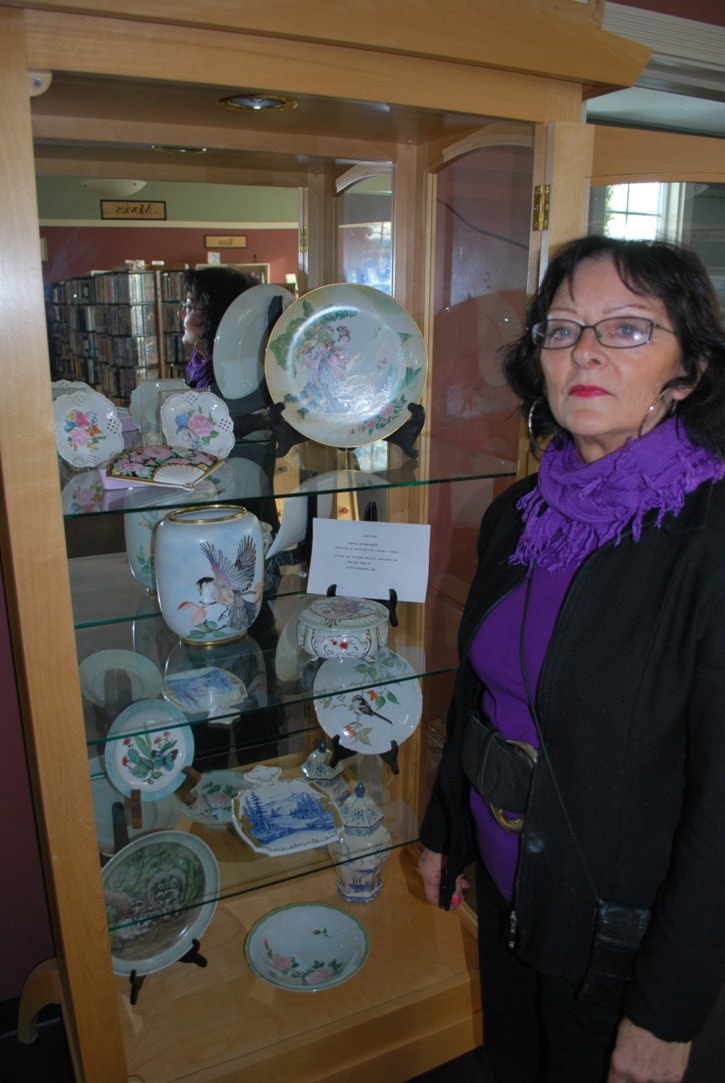Elaine Lindsay’s beautiful porcelain painting is currently on display at the Nakusp Public Library. Patrons are enjoying Elaine’s intricate, creative, and graceful work. This kind of art is uncommon these days, and everyone is invited to come to the Library and take advantage of a rare opportunity.
The art of china painting or porcelain art has its roots in the history of early China. Although it is documented that clay utensils were fashioned in Turkey as early as 7000 BCE and Egyptians built ovens to harden clay pieces in 5000 BCE, it wasn’t until the T’ang Dynasty in 600 CE that the Chinese began making what is known today as hard porcelain. Combinations of kaoline clay and feldspar resulted in porcelain ware that possesses excellent qualities of hardness, translucency, and whiteness. The Chinese remained the masters and sole producers of hard-bodied porcelain until the middle of the 1700’s. Marco Polo suggests in his “Adventures of Marco Polo” that he was the first person to bring an example of Chinese porcelain in the shape of a small white vase on his return to Italy in 1295. It wasn’t until the 15th century that porcelain was considered a valuable and luxurious material by the nobility and wealthy patrons in Europe. In the 1700’s the Europeans finally unlocked the secrets to making fine porcelain and established factories which produced high quality wares.
The decoration of porcelain became almost as important as the item itself and European factories employed artists who painted first in the style of the Chinese, monochromatically, one color scenes of flowers, fish or birds. The French artists painted portraits and scenes on miniature boxes and cups, the Italians painted figurines, flowers and landscapes, animals and battle scenes. In the latter part of the 18th century, porcelain production became so expensive that it was seen only in the Court or churches.
Elaine learned her craft from teacher Roxanna Zanone, an architect from Italy who had painted for 35 years and gave classes in Vancouver. Elaine was a member of the Porcelain Artists of Vancouver. Elaine purchases blank porcelain pieces from Japan, Bavaria, Germany, Hungary, and Spain. Her designs are free-hand, with results that are extremely beautiful, intricate and original. Her designs are Dresden oriented. Elaine comes from an artistic family. Many patrons who have viewed her work remember Elaine’s mother who decorated cakes with icing sculpture. More than one patron has remarked, “Elaine’s mother made my wedding cake.” Some of Elaine’s pieces are decorated with 24 carat gold. One piece is an older piece that Elaine has refurbished, and the gold outlines are shining and beautiful.
The Library is honoured to show Elaine Lindsay’s lovely and precious art and invites everyone to check it out!
